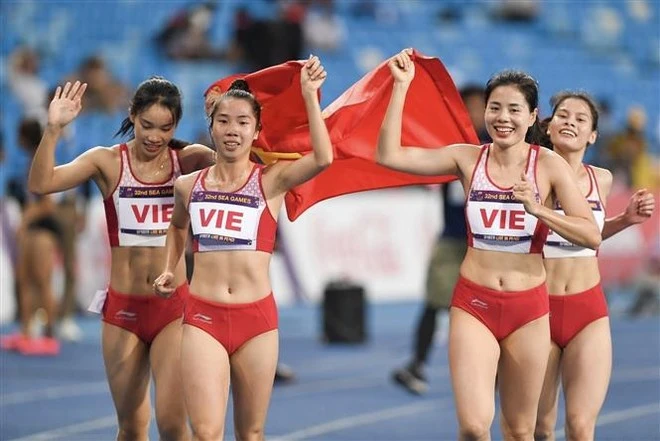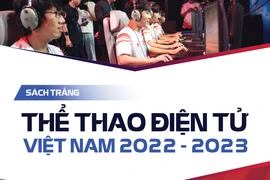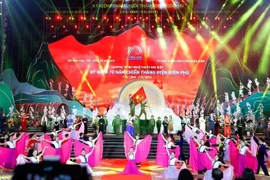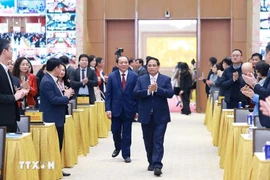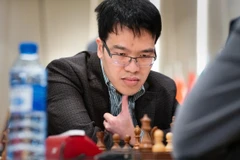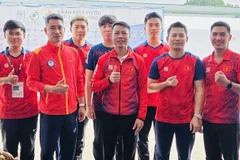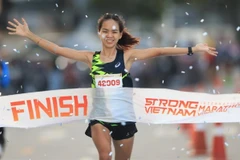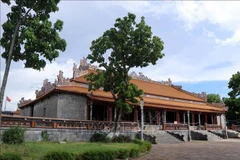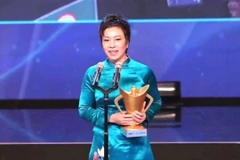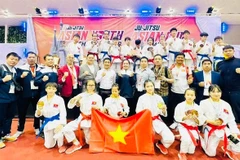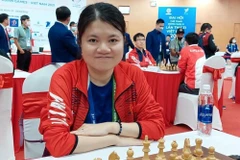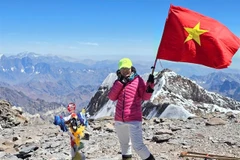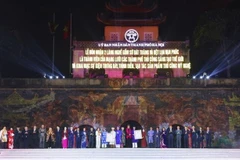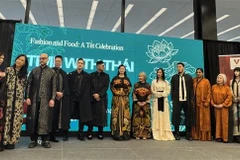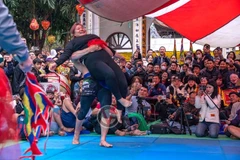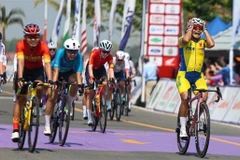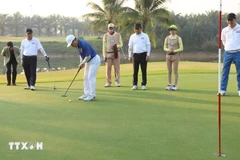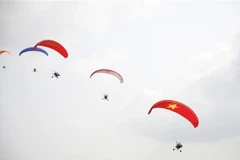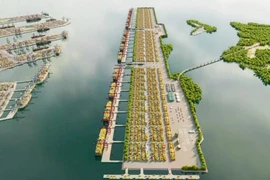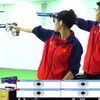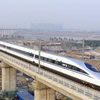Hanoi (VNA) – Vietnam has set lofty goals in terms of its athletics programs within the country's sports development strategy for 2030 with a vision extending to 2045.
The strategy aims to ensure that Vietnam secures a top-three finish at the Southeast Asia (SEA) Games and a top-20 position at the Asian Games (ASIAD). This includes the ambitious target of winning five to seven gold medals at the ASIAD, as well as securing medals at the Olympic and Paralympic Games.
Clear roadmap for success
In recent years, the Athletics Division under the Sports Authority of Vietnam and the Vietnam Athletics Federation have regularly assessed training outcomes and international competition results. Based on these assessments, and with an adequate budget, Vietnam Athletics has developed a long-term plan, detailing the development of the sport from 2025 to 2035, with a vision towards 2045.
Nguyen Manh Hung, General Secretary of the Vietnam Athletics Federation, explained that it typically takes between 8-10 years to develop an athlete from their early potential to reaching high-level competition. For this reason, a 10-year plan is appropriate for the sport’s long-term growth and allows the sector to establish a comprehensive, solid strategy to optimise performance.
To implement this strategy successfully, Vietnam Athletics has set clear objectives, including remaining in the top three at the SEA Games for the next five editions, with a consistent ranking in the top two. From 2035 to 2045, the goal is to secure first and second-place finishes at the SEA Games.
For the 2030 ASIAD, Vietnam Athletics aims for one gold medal, two to three silver medals, and one bronze. By 2028, the goal is for two athletes to meet the qualification standard for the Olympic Games. Looking ahead to the 2034 ASIAD, the federation aims for two golds, three to four silvers, and additional bronze medals, with an overall team ranking between 9th and 12th. By the 2032 Olympic Games, the target is to have three to four athletes qualify.
To meet these goals, Vietnam Athletics is focusing on nurturing the country’s most promising talent, ensuring a solid pipeline for sustained success. The national team, comprising around 100 athletes per year, and the national junior team, with roughly 120 athletes annually, will form the core of the development programme, supported by expert coaches.
The federation’s plan also underscores the need for better-organised training camps, as well as the development of improved facilities, including running tracks and sports grounds at the National Sports Training Centres, Hung said.
In addition, the strategy includes investment in cutting-edge technology, medical science, and equipment at national centres to enhance the selection, training, and overall development of athletes. These investments are crucial for effectively implementing the strategy and reaching the set targets.
Supporting national health goals
The introduction of this strategy also provides an opportunity for the sports sector in general and athletics in particular to contribute to national health objectives. The goal is to have 6%-7% of the population regularly engaging in physical activity, as part of the wider goal for 45% of the population to be actively participating in exercise. The strategy also aims for 90% of students, military personnel, and other key groups to meet physical fitness standards.
Hung noted that realising these objectives requires close collaboration with the Ministry of Education and Training to encourage students to participate in physical activities outside of regular gym classes. By having local education departments and universities run events, it will contribute to the goal of regular physical activity, and also attract sponsors and raise awareness. Equally, local sports and cultural departments need to collaborate with other agencies to organise events that encourage grassroots participation.
He emphasised that implementing the strategy effectively requires alignment among central and local authorities. Collaboration on sports investment, particularly in Olympic sports, alongside improvements in infrastructure, training conditions, and athlete welfare will be crucial for attracting and retaining top talents, he underscored./.
